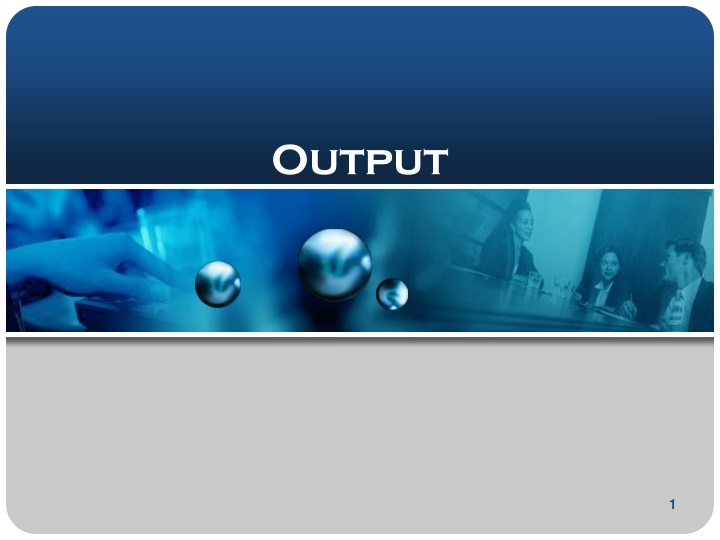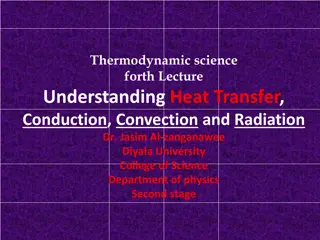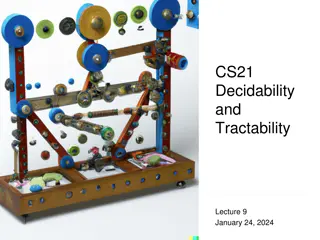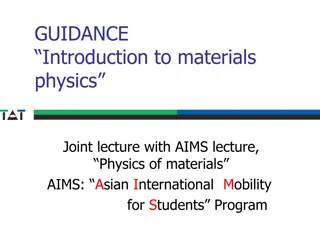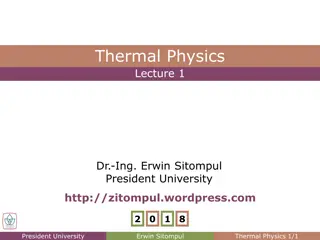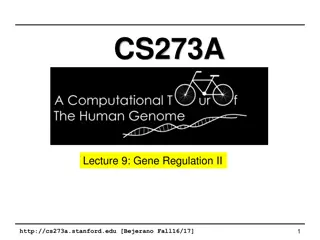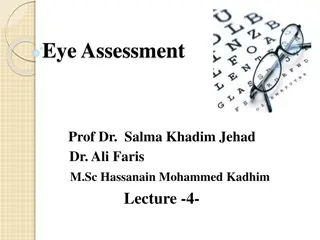Display Devices and LCD Monitors
Explore the world of display devices used for conveying information to users in a visual format. Learn about different types of monitors like LCD monitors and screens, their functionalities, sizes, resolution, and quality. Dive into the realm of technology that shapes the visual experience on various devices.
Download Presentation

Please find below an Image/Link to download the presentation.
The content on the website is provided AS IS for your information and personal use only. It may not be sold, licensed, or shared on other websites without obtaining consent from the author.If you encounter any issues during the download, it is possible that the publisher has removed the file from their server.
You are allowed to download the files provided on this website for personal or commercial use, subject to the condition that they are used lawfully. All files are the property of their respective owners.
The content on the website is provided AS IS for your information and personal use only. It may not be sold, licensed, or shared on other websites without obtaining consent from the author.
E N D
Presentation Transcript
Output 1
Output Output is any data that has been processed into a useful form. Output Device is any hardware component that conveys information to one or more people. 2
1) Display Devices Is an output device that visually conveys text, graphics and video information. Desktop Computer typically use a monitor as their display device. Monitor is a display device that is packaged as a separate peripheral. 3
Display Devices Monitor controls allow users to adjust the brightness, contrast, positioning, height, and width of images. Most mobile computer and devices integrate the display and other components into the same physical case. Display device usually show text, graphics and video information in color. Monochrome means the information appears in one color on a different color background. 4
Display Devices Some PDAs and other mobile device use monochrome displays because they require less battery power. Types of display device include: LCD monitors and screens. Plasma monitors. CRT monitors. 6
LCD monitors and Screens Is a desktop monitor that uses a liquid crystal display to produce images. also called a flat panel monitor. 7
LCD and Screens It s available in a variety of sizes: With the more common being 15 , 17 , 18 , 19 , 20 , 21 and 23 inches- some are 30 or 40 inches. Notebook computer screen size 14.1, 15.4 and 17 inches. Tablet screen range from 8.4 to 14.1 inches. PDA screen average 3.5 inches. Smart phones screen rang from 2.5 to 3.5 inches. 8
LCD Technology and Quality Resolution Resolution is the number of horizontal and vertical pixels in a display device. A higher resolution uses a greater number of pixels and this provides a smoother, sharper, and clearer image. As the resolution increases some item on the screen appear smaller such as menu bar, toolbars and rulers. Try it! 9
LCD Technology and Quality Response time Response time of an LCD is the time in milliseconds (ms) that it takes to turn a pixel on or off. LCD response times range from 8 to 25 ms. The lower the number, the faster the response time. 11
LCD Technology and Quality Brightness of LCD is measured in nits. A nit is a unit of visible light intensity. The higher the nits, the brighter the images. 12
LCD Technology and Quality Pixel pitch: Some times called dot pitch, is the distance in millimeters between pixels on a display device. Average pixel pitch on LCD should be .28 mm or lower. The lower the number, the sharper the image. 13
Ports and LCD monitors A cable on monitor plugs in a port on the system unit. LCD monitors use a digital signal to produce a picture. To display the highest quality images, an LCD monitor should plug in a DVI ( digital Video Interface) port. DVI enables digital signals to transmit directly to an LCD monitor. HDMI TO DVI CABLE 14
Plasma Monitors Is a display device that uses gas plasma technology, which sandwiches a layer of gas between two glass plates. Large business users or power users sometime have plasma monitors , which often measure more than 60 inches wide. Plasma monitor offer larger screen size & higher display quality than LCD monitors but are more expensive. These monitor also can hang directly on a wall. 15
CRT Monitors Is a desktop monitor that contains a cathode-ray tube. Cathode-ray tube (CRT) is a large sealed glass tube. The front of the tube is the screen. CRT available in various size, with the more common being 15, 17, 19, 21 and 22 inches. 16
2 . Printers Is an output device that produces text and graphics on a physical medium such as paper or transparency film. Many different printers exist with varying speed, capabilities and printing method. There are two type: Nonimpact Printer such as Ink-jet, Photo, Laser, Thermal, Mobile, Plotters and large format printers. Impact Printer such as dot-matrix printers and line printers. 18
Type of printer: 1 . Nonimpact Printers Forms characters and graphics on a piece of paper without striking. Some nonimpact printers spray ink, while others use heat or pressure to create images. 19
A . Ink-Jet Printers Is a type of nonimpact printer that forms characters and graphics by spraying tiny drops of liquid ink onto a piece of paper. Produce text and graphics in both black and white and color on a variety of paper types. The resolution determines the quality of an ink- jet printer. 20
Ink-Jet Printers Resolution is measured by the number of dots per inch (dpi) a printer can print. Most ink-jet can print from 600 to 4800 dpi. The speed of it is measured by the number of pages per minute (ppm) it can print. Most ink-jet print from 3 to 26 ppm. 21
B . Photo Printers Is a color printer that produces photo- lab-quality pictures. Some photo printers print just one or two size of images, for example, 3X5 inches and 4X6 inches. Many photo printers use ink-jet technology. 22
C . Laser Printers Is a high-speed, high-quality nonimpact printer. Printer speeds: For home and small office --Black & white text (15 to 50 ppm), Color (4 to 27 ppm). For large business users print more than 150 ppm. Color laser printers are slightly higher price than otherwise equivalent black & white laser printers. Usually cost more than ink-jet printers. 23
D . Thermal Printers Generates images by pushing electrically heated pins against heat-sensitive paper. Basic thermal printers are inexpensive, but print quality is low and images tend to fade over time. 24
E . Mobile Printers Is a small, lightweight, battery-powered printer that allows a mobile user to print from a notebook computer, tablet PC, PDA, or smart phone while traveling. Mobile printers fit easily in a briefcase alongside a notebook computer. Mobile printers mainly use ink-jet or thermal technology. 25
F . Plotters and Large-Format Printers Plotters are sophisticated printers used to produce high-quality drawing such as blueprints and maps. Used in specializes fields such as engineering and drafting and usually are very costly. Using ink-jet printer technology, but on much larger scale. 26
Other output devices Speakers. Headphones. Earphones. Fax machines and Fax modems. Multifunction peripherals. Data projectors. 27
Speakers, Headphones, and Earphones Audio output device is a component of a computer that produces music, speech or other sounds. Most personal computers have a small internal speaker that usually emits only low-quality sound. Many PC users add surround sound speakers to their computers to generate a higher-quality sound. 28
Speakers, Headphones, and Earphones Speakers typically have tone and volume controls, allowing users to adjust settings. In many cases, users connect the speakers to ports on the sound card. With wireless speakers, they connect wirelessly to the sound card. 29
Speakers, Headphones, and Earphones Users can plug headphones or earphones in a port on the sound card, in a speaker, or in the front of the system unit. With headphone or earphones, only the individual wearing the headphone or earphones hears the sound from the computer. 30
Fax Machines and Fax Modems Fax Machines is a device that codes and encodes documents so they can be transmitted over telephone lines. The document can contain text, drawings or photographs, or can be handwritten. The term fax refers to document that you send or receive via a fax machine 31
Fax Machines and Fax Modems Many computers includes fax capability by using a fax modem. fax modem transmit computer-prepared documents or documents that have been digitized with scanner or digital camera. Fax modem transmits these faxes to a fax machine or to another fax modem. 32
Multifunction Peripherals Is a single device that looks like a copy machine but provides the functionality of a printer, scanner, copy machine, and perhaps a fax machine. Some use color ink-jet printer technology, while others include a black-and-white laser printer. An advantage of these device is they are significantly less expensive than if you purchase each device separately. The disadvantage, If the device break down, you lose all four functions. 33
Data Projectors Is a device that takes the text and images displaying on a computer screen and projects them on a larger screen so an audience can see the image clearly. Some data projectors are large devices that attach to a ceiling or wall in an auditorium. Other are small portable device. 34
Homework Choose two output devices (listed previously) in lecture (or- you may find something was not discussed). Make a comparison between these devices : speed? Price? Quality or services ? Connectivity ? Provide photos of the devices 35
